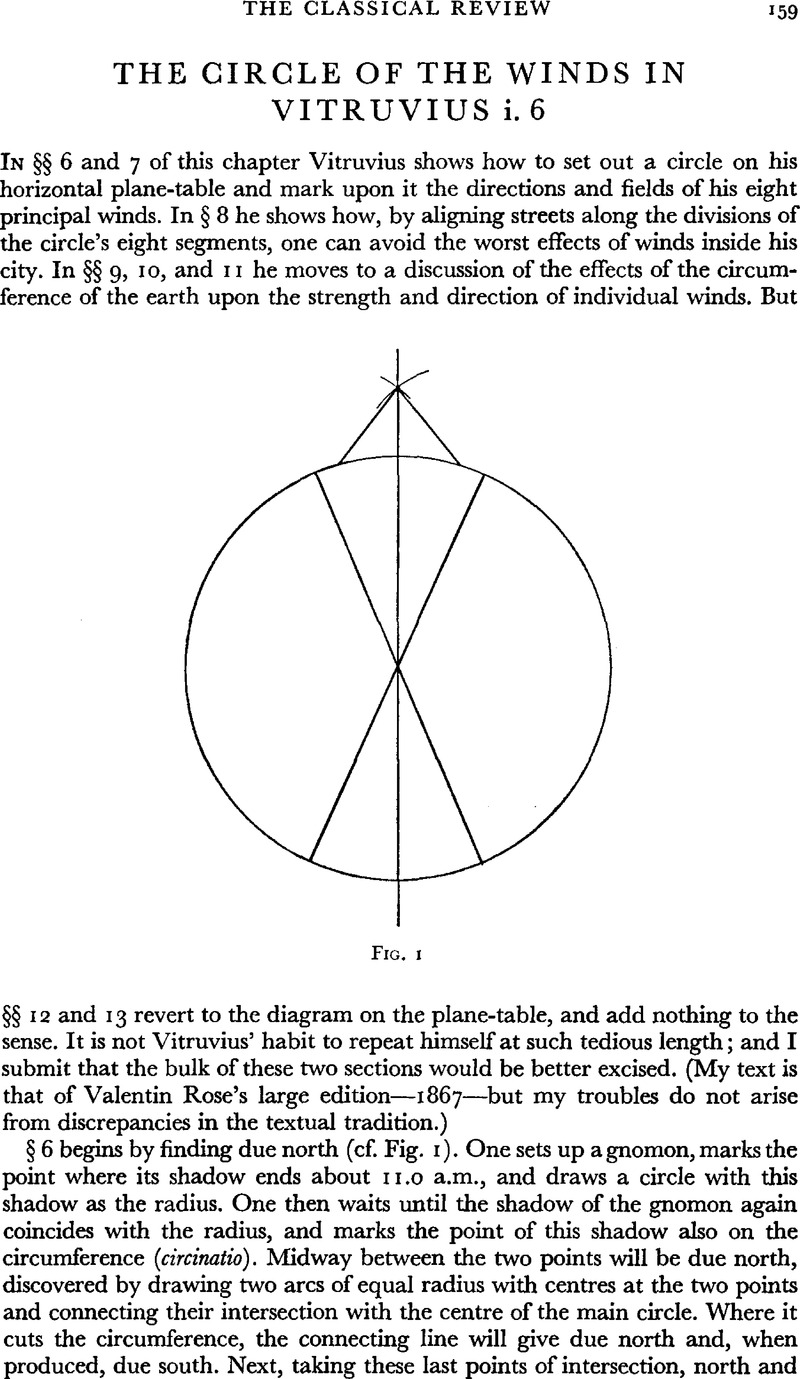Article contents
The circle of the winds in Vitruvius i. 6
Published online by Cambridge University Press: 27 February 2009
Abstract

Information
- Type
- Review Article
- Information
- Copyright
- Copyright © The Classical Association 1971
References
page 160 note 1 Such glosses, of course, are not uncommon in Vitruvius manuscripts. See, e.g., Ruffel, P. and Soubiran, J. in Pallas ix (Toulouse, 1960), especially pp. 35 ff.Google Scholar
page 160 note 2 If the broad radial streets are wrongly aligned, it seems that either the wind, after the open country, will rush violently inside their relatively narrow spaces, or it will grow more violent as it rushes along the narrow alleys into which they contract as they near the city-centre, or it will form eddies in the mouths of the narrow alleys, where they meet the radial streets. Each of these interpretations has, I think, its virtues—and its draw-backs.
page 160 note 3 Vitruvius, of course, directs the reader to his own diagrams at various points in his work. The most famous instance, apart from this one, is iii. 3. 5. See also iii. 2. 13.
page 160 note 4 There is, however, an inconsistency here For § 7, as we have seen, wished to direct both broad and narrow streets away from the centres of the winds. Granger's restoration of Vitruvius' second figure (Vitruvius, vol. i, plate A) fails to shelter the narrow streets. But this is quite easy with a plan on the lines of my own Fig. 2; and I am inclined to think § 12's omission of the narrow streets mere careless lapse. (My Figure 2 would also have the advantage, over Granger's plan, of giving right-angled junctions of the main streets and alleys.)
Fensterbusch (ad loc.) denies that Vitruvius' city was radial; and his first figure shows a grid plan of normal Hellenistic type. I do not believe him. But I cannot attack his arguments in detail here (see, however, p. 161 n. 2), beyond saying that Vitruvius liked a city of generally circular shape (i. 5. 2), with its forum in the centre (i. 7. 1), and admired Halicarnassus, with its resemblance (i. 8. 2) to the curvature of a theatre.
page 161 note 1 Yet Vitruvius never gives angles in degrees, even for the important roof-pitches in Books iii and vi. How much Greek geometry did he really know and practise? I think this is one of the hardest questions we have to face about him.
page 161 note 2 Fensterbusch, (Vitruv, Zehn Bücher [Berlin, 1964], ad loc.Google Scholar) says the meaning of inter must be distributive. I take him to mean that one must place a gnomon (or groma) on all the corners in turn. This seems a great strain on the word inter; and it is inconsistent with his contention that the city was laid out on a grid, which used the lines of division between only two pairs out of the eight principal winds (p. 160 n. 4 above). For one would put an upright gnomon, or groma, on each corner in turn, only if one wished to align street upon this groma and the gnomon at the centre of the circle, thus obtaining the radial plan for the main streets to which Fensterbusch objects.
- 4
- Cited by

